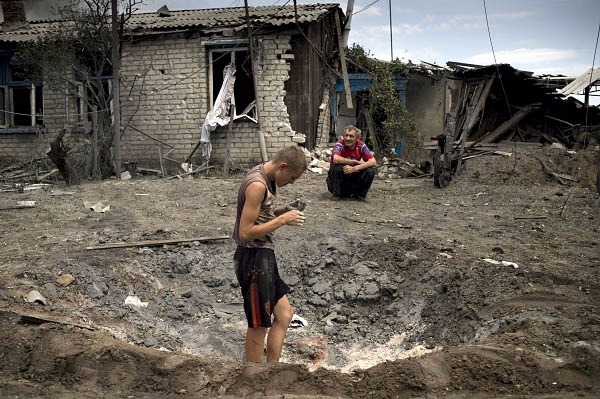Russia’s war in eastern Ukraine forced hundreds of thousands to leave their homes — among them Hennadii Hryhoriev, an expert in trauma therapy with 45 years experience as a doctor. He has been honored with a number of prestigious awards during his extensive career. The fighting led to Hennadii moving to government-controlled Lysychansk from occupied Luhansk. Despite this, his experience will not go to waste. He has found a new home in the Luhansk Region’s new central Medical center:
"Many of my things had to be left in Luhansk. I still can’t get everything. You understand what happened there. That’s why I had to move here."
Even with the difficulties surrounding the founding of a new hospital, Hennadii doesn’t complain. The department the doctor leads is brand new, as is the region’s children’s hospital itself. Due to the occupation of Donbas, the hospital, along with all of its departments, had to be built from scratch.
"Currently, we have 17 departments. We started with just six. We only had 8 beds in the very beginning, but by January, we’ll have 315. We have 265 right now, and they’re all full," says Svitlana Osheko, Head Doctor of the Luhansk Regional Children's Hospital.
Despite being relatively new, demand for services at the Luhansk Regional Children’s Hospital is already huge. The main hospital in neighboring Donetsk region is in occupied territory — and a replacement for it in the government-held area has yet to be built. But despite the pressure, the doctors here go the extra mile to treat their patients — while also striving to create a safe and comfortable environment for them as well.
"One of the types of therapy we are trying out is correctional therapy with sand. Basically, we are implementing art-therapy. Everyone likes it, from what I can see. Everyone who comes in can’t pass by the table without drawing on it," says Daria Kozhemiakyna, psychologist of the Luhansk Regional Children's Hospital.
Due to her illness, Nastia has to come to this hospital for treatment every three months. She’s been coming to the Lysychansk hospital for two years now, and before that, she was being treated in Luhansk:
"It’s very different in Luhansk. The rooms there are very large, and there’s a lot of noise and people. It’s quieter here and there are only two people to a room. The staff is nice too. Everything’s great!"
Specific attention is given to the hospital’s young patients. According to Svitlana Osheko, not long ago, the region’s infant mortality rate was critical:
"The data for 2015 and 2016 for infant mortality was up to 37 per 1,000. That’s, well… I’m not even sure what to say. That’s what happens during war. There was the war though, so that’s why the numbers are so high."
To save infants, the region decided to mobilize forces. In particular, they made the decision to invest in new equipment. The staff of the hospital says that they are proud of what they’ve done.
"We have the most modern equipment, and it allows us to assist premature infants weighing 800 grams. We saved three babies this year, all of whom were born weighing under one kilogram," says Mykhailo Savenko, Head of Newborn Pathology Department of the Luhansk Regional Children's Hospital.
The infant mortality rate has now dropped dramatically. One of the main reasons for the drop is because of this ambulance.
"With this ambulance, we can transport infants born extremely early, with a birth rate of fewer than 500 grams. To do this, we have a two-walled incubator. It keeps the air humid and warm. We also have a respiratory assistance machine, which works specifically with newborn lungs," explains Ihor Bondarenko, Head of the ICU Department of the Luhansk Regional Children's Hospital.
Due to the lack of specialists, the hospital has yet to see a new Pediatric Oncology department. All experts are welcome to apply.





